Soil Erosion
Soil erosion | Soil degradation | Ecosystem decline
The many forms of soil erosion are listed below. Wind, water and gravity drive erosion. A paper titled 'Agrometeorology in relation to the control of soil erosion' was presented at the World Meterology Conference in Melbourne in 1966 that outlines the mechanisms of both wind and water erosion.
Further information on soil erosion is available on the soil health pages of VRO.
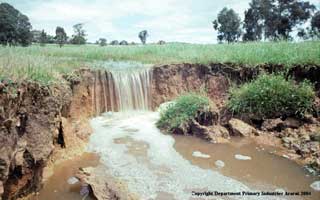 Surface water flowing over a small gully head in a pastured catchment | Gully erosion Gully erosion results when flows of water concentrating in lower parts of the landscape scour sharp sided entrenched channels deeper than 0.5 metre. More information is available at the gully erosion page. | |
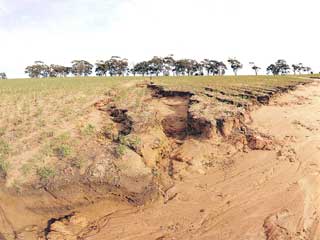 Sheet erosion and rill erosion of a cropped paddock following an intense thunderstorm | Sheet and rill erosion Sheet and rill erosion is the shallow stripping of surface soils by the action of raindrops, shallow flows of water or wind. Rills are included as scour channels up to a depth of 0.5 metre. They are gullies if deeper than this. More information is available on the sheet and rill erosion page. | |
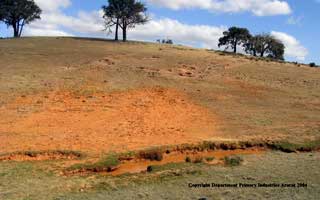 Tunnel erosion in a sloping agricultural landscape producing red-brown sediment fans at the outlets of the tunnels | Tunnel erosion Tunnel erosion is the scouring of routes through susceptible subsoils as flows of water moving through the soil concentrates in cracks, root channels and animal burrows. More information is available at the tunnel erosion page. | |
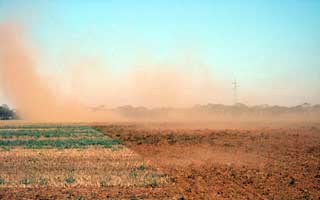 Dust arising and transported as a cropping paddock is being prepared for sowing | Wind erosion Wind erosion occurs where wind detaches and removes soil components by having direct access to bare dry soil surfaces. More information is available at the wind erosion page. | |
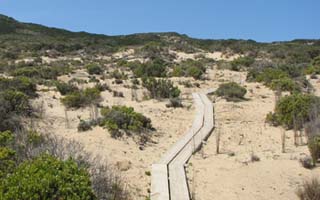 A Boardwalk used to minimise damage to coastal vegetation in an area of coastal erosion previously initiated by human trampling | Coastal erosion Coastal erosion is a particular form of wind erosion. Sand particles are detached and moved by wind where damage to coastal vegetation exposes the fragile sand dunes to the direct forces of the wind. More information is available at the coastal erosion page. | |
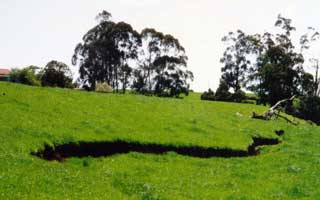 A 400 mm tall slip fracture at the top of a developing landslip | Land slip A Land slip is where soil on sloping land become physically unstable and slips downhill. More information is available at the land slip page. | |
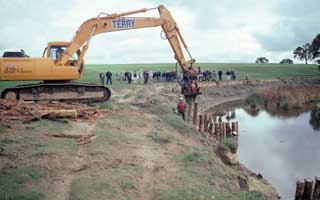 An articulated excavator driving wooden piles into the outside curve of a stream to protect the banks from further erosion | Stream bank erosion Stream bank erosion occurs when streams begin cutting deeper and wider channels as a consequence of increased peak flows or the removal of local protective vegetation. More information is available at the stream bank erosion page. |


